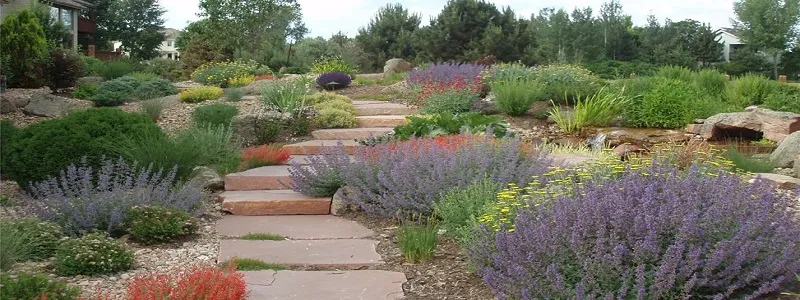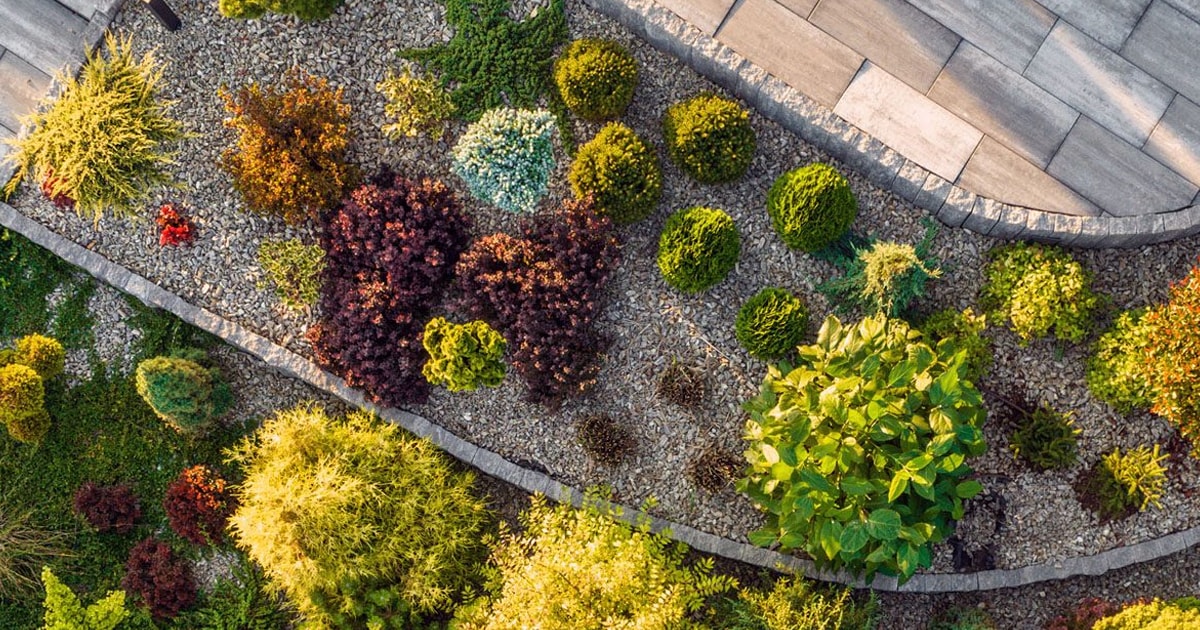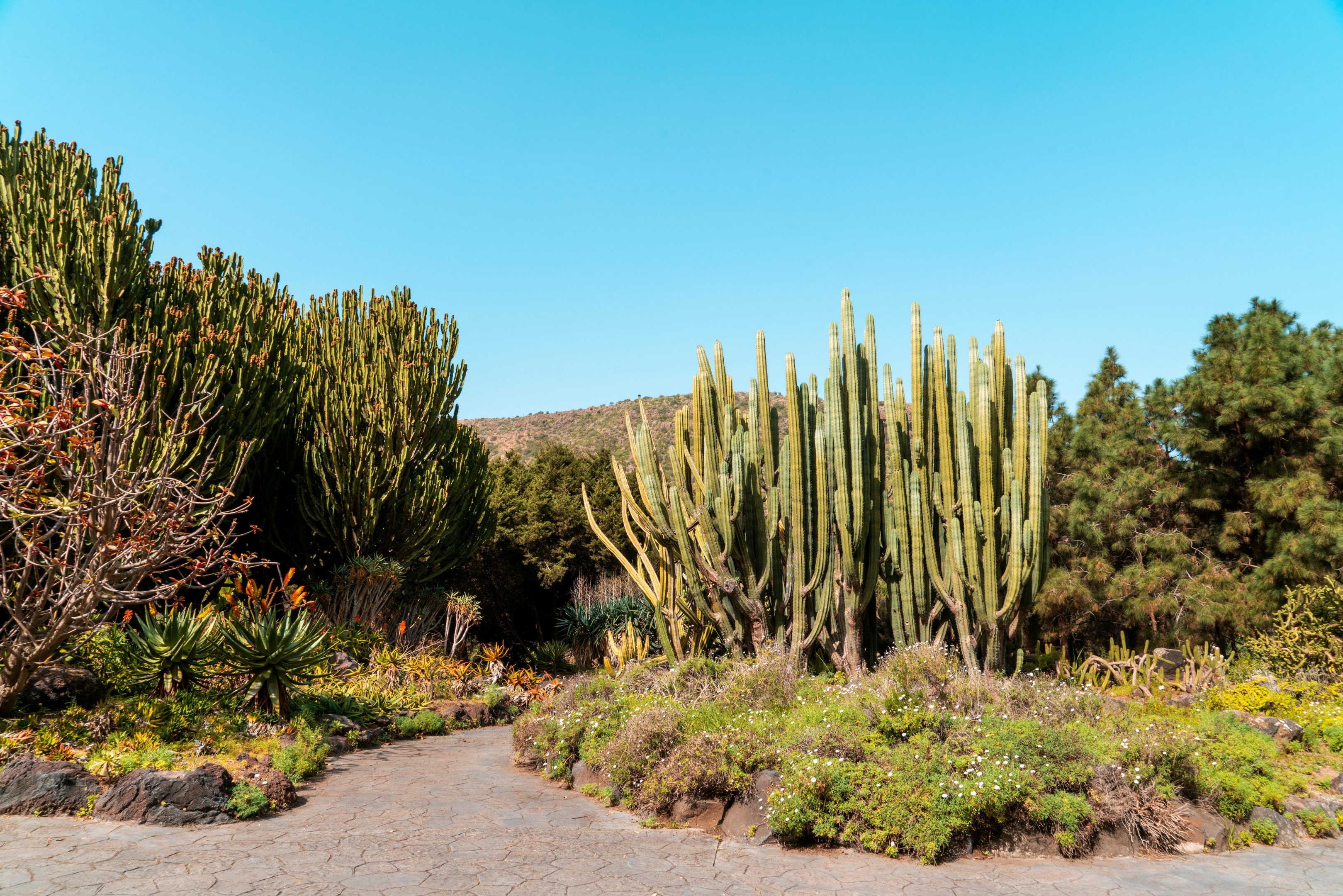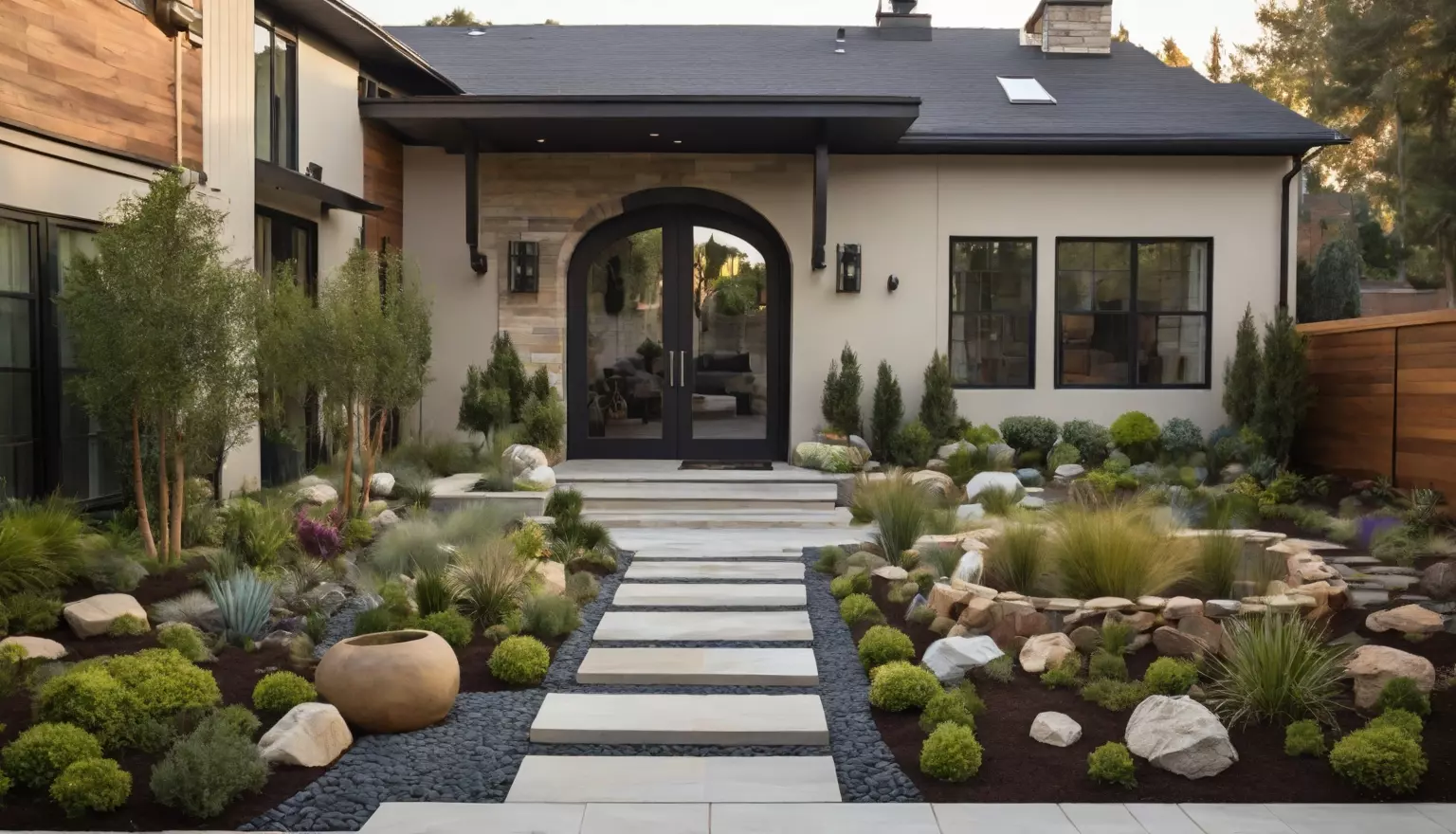Xeriscaping is a landscaping technique specifically designed to minimize water usage by utilizing drought-tolerant plants and efficient irrigation systems. The term “xeriscaping” comes from the Greek word “xeros,” meaning “dry,” which highlights its focus on creating water-wise landscapes. This approach is particularly valuable in dry climates like those found in Houston and Humble, TX, where water conservation is essential.
In Houston and Humble, where hot, arid conditions prevail for much of the year, xeriscaping offers a sustainable solution to traditional gardening methods that often require excessive watering. By incorporating drought-resistant plants and water-efficient techniques, xeriscaping not only conserves water but also creates beautiful, resilient outdoor spaces that thrive in local climate conditions.
As a result, homeowners can enjoy lush, attractive landscapes while significantly reducing their environmental impact and water consumption.
Benefits of Xeriscaping for Your Landscape
Water Conservation: Minimize Water Usage
One of the primary benefits of xeriscaping is its ability to drastically reduce water consumption. By using drought-tolerant plants and implementing efficient irrigation methods such as drip irrigation systems, you can create a landscape that thrives on minimal water. This is especially important in Houston and Humble, where conserving water is crucial due to the hot, dry climate.
Cost Efficiency: Reduce Water Bills
Xeriscaping not only conserves water but also cuts down on your water bills. Traditional landscapes often require frequent watering, which can lead to high utility costs.
However, by optimizing water usage with xeriscape landscaping, homeowners can significantly reduce their monthly water expenses, making it a cost-effective choice for maintaining a beautiful yard.

Low Maintenance: Sustainable Outdoor Space
Drought-resistant plants and native Texas plants used in xeriscaping require less maintenance compared to traditional lawns and gardens. These plants are adapted to thrive in arid conditions, meaning they need less watering, fertilizing, and pest control. This results in a low-maintenance, sustainable landscape that saves time and resources while remaining vibrant and healthy year-round.
Enhancing Curb Appeal and Property Value
A well-designed xeriscape garden enhances your property’s curb appeal and can increase its value. Xeriscaping offers a unique and attractive alternative to traditional lawns, incorporating a variety of textures, colors, and plant types that create visual interest.
In Houston and Humble, where the demand for water-efficient, eco-friendly landscaping is growing, a xeriscape garden can make your home stand out, attracting potential buyers and adding value to your property.

Planning Your Xeriscape Landscape in Houston and Humble
Assessing Soil Quality and Local Climate
Before starting your xeriscape project in Houston or Humble, it’s essential to evaluate your soil quality and understand the local climate. Testing your soil’s pH and nutrient levels will help determine which drought-tolerant plants will thrive in your garden.
The local climate, characterized by hot, dry summers, requires plants that can withstand extended periods of heat and minimal rainfall. By selecting plants that are adapted to these conditions, you ensure a thriving xeriscape that requires less water and maintenance.
Efficient Irrigation Systems: Drip Irrigation and Soaker Hoses
Efficient irrigation is a cornerstone of successful xeriscaping. Drip irrigation systems and soaker hoses are ideal for delivering water directly to the plant roots, reducing water evaporation and runoff. These systems are especially effective in Houston’s heat, where water conservation is crucial. By targeting the water where it’s needed most, you can ensure that your drought-tolerant plants remain healthy without wasting precious resources.
Incorporating Hardscapes to Conserve Water
Incorporating hardscapes such as patios, walkways, and rock gardens is another effective way to conserve water in your xeriscape design. Hardscapes reduce the amount of water-dependent vegetation in your landscape, further lowering water usage.
They also add aesthetic value and functionality to your outdoor space, creating a visually appealing and sustainable garden that stands up to Houston and Humble’s challenging climate.
Selecting the Best Xeriscape Plants for Dry Climates
Drought-Tolerant Plants and Native Texas Plants
Choosing the right plants is key to a successful xeriscape. Drought-tolerant plants, such as succulents and cacti, are excellent for conserving water in Houston’s dry climate. Native Texas plants, like yucca and Texas mountain laurel, are well-adapted to the local environment, requiring minimal water and thriving in the region’s heat.
These plants form the backbone of any xeriscape garden, ensuring a resilient landscape that remains beautiful even during drought conditions.
Ornamental Grasses and Ground Covers
Ornamental grasses, such as pampas grass and fountain grass, are perfect for adding texture and movement to your xeriscape. These grasses are not only drought-resistant but also require little maintenance, making them ideal for Houston and Humble gardens.
Ground covers like creeping thyme and sedum help retain soil moisture and prevent erosion, further reducing the need for irrigation. These plants contribute to a lush, green landscape without the high water demands of traditional lawns.
Drought-Resistant Trees and Shrubs
Incorporating drought-resistant trees and shrubs, such as olive trees and desert willows, adds structure and shade to your xeriscape. These plants provide essential shelter and cooling in your outdoor space, making it more comfortable during Houston’s hot summers.
By selecting trees and shrubs that are naturally adapted to dry climates, you ensure that your landscape remains vibrant and healthy with minimal watering. These elements not only enhance the visual appeal of your garden but also contribute to a sustainable, water-wise environment.
Top Drought-Tolerant Plants for Xeriscaping in Texas
Succulents: Aloe, Agave
Succulents are among the most popular choices for xeriscaping in Texas due to their exceptional drought tolerance and unique aesthetic appeal. Aloe and agave, in particular, are hardy plants that store water in their leaves, allowing them to thrive in arid climates.
These low-maintenance plants are perfect for creating striking focal points in your xeriscape garden, and their ability to survive on minimal water makes them ideal for Houston and Humble’s dry conditions.

Native Texas Plants: Yucca, Texas Mountain Laurel
Native Texas plants like yucca and Texas mountain laurel are naturally adapted to the state’s hot, dry climate, making them excellent choices for xeriscaping. Yucca, with its spiky leaves and tall flower stalks, adds architectural interest to any landscape, while Texas mountain laurel offers vibrant purple flowers that attract pollinators. These plants require minimal water and care, ensuring that your xeriscape garden remains lush and colorful year-round.

Ornamental Grasses: Pampas Grass, Fountain Grass
Ornamental grasses such as pampas grass and fountain grass bring texture, movement, and visual interest to xeriscape gardens. These drought-resistant grasses thrive in Texas’s arid climate and require little maintenance once established.

Pampas grass, with its tall, feathery plumes, creates a dramatic backdrop, while fountain grass adds softness and grace to your landscape. Both grasses are excellent for reducing soil erosion and require minimal water, making them perfect for water-wise landscaping in Houston and Humble.
Designing Your Water-Wise Xeriscape Garden
Mixing Textures and Colors for Visual Interest
Creating a visually appealing xeriscape garden involves mixing a variety of textures and colors. By combining succulents, ornamental grasses, and native plants, you can design a landscape that is not only water-efficient but also aesthetically pleasing.
The contrast between the spiky leaves of yucca, the soft plumes of fountain grass, and the vibrant colors of Texas mountain laurel ensures a dynamic and engaging garden that thrives in Houston and Humble’s dry climate.

Implementing Drip Irrigation Systems
To optimize water usage in your xeriscape garden, implement drip irrigation systems. These systems deliver water directly to the plant roots, significantly reducing water evaporation and ensuring that each plant receives the precise amount of moisture it needs to thrive. Drip irrigation is particularly effective in Houston’s hot climate, where water conservation is essential.
This method not only conserves water but also promotes healthier plant growth by preventing overwatering.
Using Organic Mulch to Retain Soil Moisture
Organic mulch is a vital component of a water-wise xeriscape garden. Applying a thick layer of mulch around your plants helps retain soil moisture, suppresses weed growth, and reduces water evaporation. Mulch also regulates soil temperature, keeping roots cool during Houston and Humble’s hot summers.
By using organic mulch, you create a more sustainable and low-maintenance landscape that requires less frequent watering, allowing your drought-tolerant plants to thrive with minimal effort.
Water Conservation Techniques for Xeriscaping
Efficient Irrigation Methods and Techniques
In xeriscaping, efficient irrigation is key to conserving water. Drip irrigation and soaker hoses are ideal for delivering water directly to plant roots, minimizing waste through evaporation and runoff. These methods ensure that your drought-tolerant plants receive the necessary moisture while using minimal water.

Rainwater Harvesting for Optimal Water Usage
Rainwater harvesting is an excellent way to further reduce water consumption in your xeriscape garden. By collecting and storing rainwater, you can supplement your irrigation system naturally. This eco-friendly practice is particularly beneficial in arid climates like Houston and Humble, where every drop of water counts.
Mulch Beds: Suppressing Weeds and Reducing Water Evaporation
Creating mulch beds around your plants is an effective way to conserve water in your xeriscape garden. Mulch suppresses weed growth, reducing competition for water, and helps retain soil moisture by minimizing evaporation.
This simple technique ensures that your plants stay hydrated with minimal water usage, making it an essential component of any water-wise landscape.
Soil Management for a Thriving Xeriscape Garden
Testing Soil pH and Nutrient Levels
For a successful xeriscape garden, begin by testing your soil’s pH and nutrient levels. Understanding your soil’s composition helps you select the right plants and determine if any amendments are necessary. In Houston and Humble, where soil conditions can vary, knowing these details is crucial for choosing drought-tolerant plants that will thrive.
Improving Soil Structure with Organic Matter
Enhance your soil’s structure by incorporating organic matter such as compost. This improves soil aeration, water retention, and nutrient availability, which are essential for supporting drought-resistant plants. Well-drained soil enriched with organic matter helps plants establish deep root systems, allowing them to access moisture more efficiently and thrive in dry conditions.
Maintaining Soil Moisture and Temperature
To maintain soil moisture and regulate temperature, apply a layer of organic mulch. Mulch reduces water evaporation, keeps the soil cool, and suppresses weed growth, all of which are vital for a thriving xeriscape garden. In Houston and Humble’s hot climate, mulch ensures that your plants remain hydrated and healthy with minimal watering, contributing to a sustainable, water-wise landscape.
Maintenance Tips for a Low-Maintenance Xeriscape
Deep Watering Techniques for Plant Health
For optimal plant health, practice deep watering techniques. Watering deeply but infrequently encourages plants to develop deep root systems, making them more resilient to drought conditions. This approach is particularly beneficial in xeriscape gardens, where plants are selected for their ability to thrive with minimal water.
Pruning for Plant Growth and Shape
Regular pruning is essential to maintaining the shape and health of your xeriscape plants. Pruning helps manage plant growth, removes dead or diseased branches, and encourages new growth. By keeping your drought-tolerant plants well-pruned, you enhance their aesthetic appeal and ensure they continue to thrive with minimal water.
Monitoring for Pests and Diseases
Even in low-maintenance xeriscapes, it’s important to monitor your plants for pests and diseases. Drought-tolerant plants are generally more resilient, but regular checks can prevent small issues from becoming major problems.
If pests or diseases are detected, prompt action will keep your garden healthy and reduce the need for intensive maintenance. This proactive approach ensures that your xeriscape remains beautiful and sustainable with minimal intervention.
Transform Your Landscape with Xeriscaping
Xeriscaping offers numerous benefits, including water conservation, cost savings, and low maintenance, making it an ideal choice for homeowners in Houston and Humble. By incorporating drought-tolerant plants, efficient irrigation systems, and sustainable design practices, you can create a beautiful, resilient landscape that thrives in dry climates.
At ADL Martinez Services, we specialize in xeriscaping and are dedicated to helping you transform your outdoor space into a water-wise paradise. Contact us today for a consultation and let our experts guide you through the process of creating a stunning, sustainable xeriscape garden tailored to your needs.
